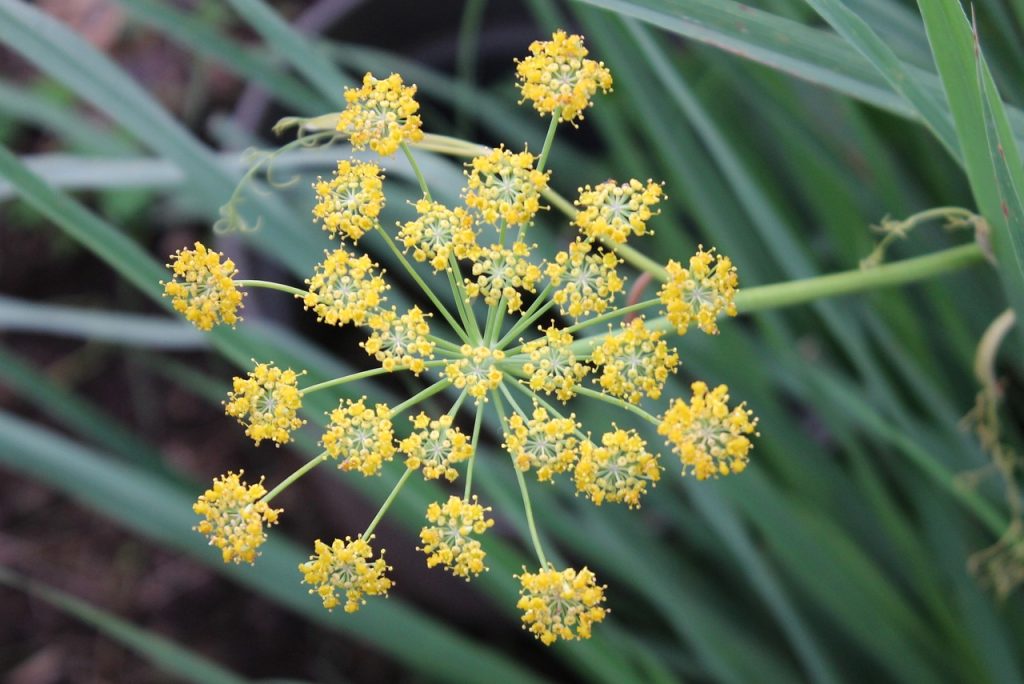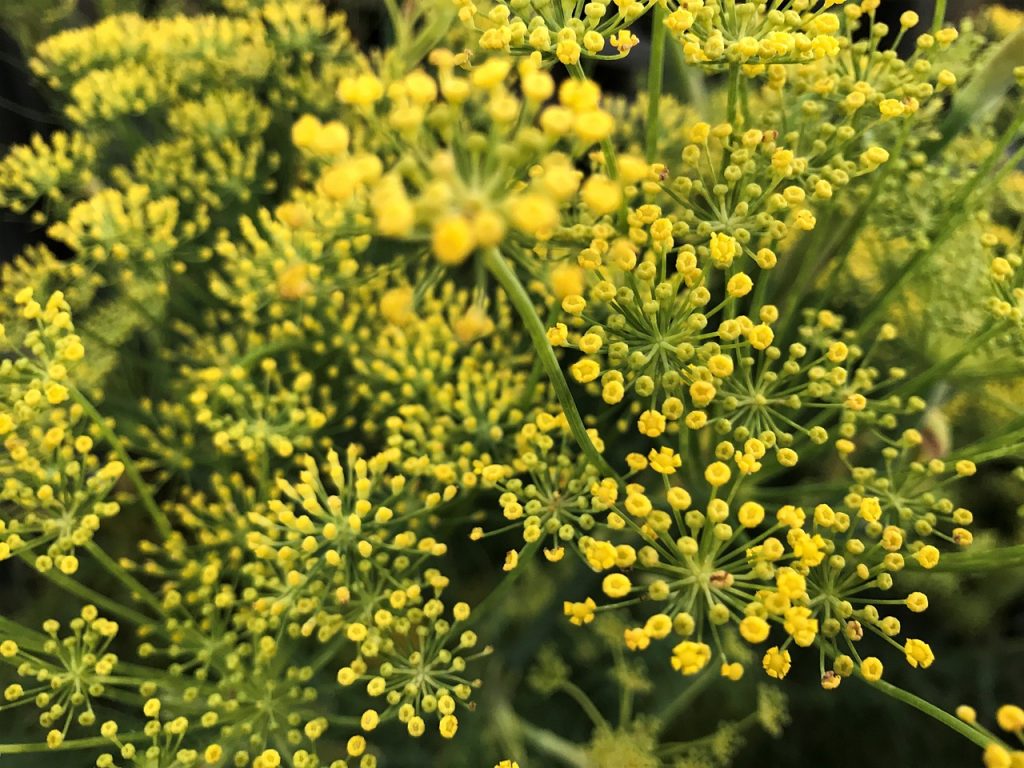Fennel (Foeniculum vulgare)
Fennel is a highly aromatic, perennial herbaceous plant known for its culinary and medicinal applications. It grows up to 6 feet (1.8 meters) tall, forming upright, hollow stems and finely divided, feathery green leaves. The base of the plant develops into a swollen, bulb-like structure in some varieties, adding to its culinary value. During summer, fennel produces clusters of small, bright yellow flowers arranged in umbrella-shaped umbels.

Native to the Mediterranean region, fennel thrives in full sunlight and well-drained soils. Its deep taproot helps it withstand drought conditions once established. The entire plant, including its seeds, bulbs, and leaves, is edible. It is widely used in cooking for its sweet, anise-like flavor. In addition to its culinary uses, it serves as a medicinal herb, aiding digestion and promoting respiratory health. The plant also attracts pollinators and supports beneficial insects.

Scientific Classification of Fennel
| Kingdom | Plantae |
| Clade | Angiosperms |
| Clade | Eudicots |
| Order | Apiales |
| Family | Apiaceae |
| Genus | Foeniculum |
| Scientific Name | Foeniculum vulgare |

Quick Information
| Plant Type | Herbaceous perennial |
| Identification | Height: Up to 6 feet (1.8 meters) Leaves: Feathery, finely divided, bright green Stem: Hollow, upright Flowers: Small yellow blooms in umbels Roots: Long, deep taproot Growth Habit: Upright and bushy |
| Distribution | Native to the Mediterranean region; widely naturalized worldwide |
| Habitat | Sunny slopes, coastal areas, and open fields |
| USDA Hardiness Zone | 4 through 9 |
| Growth Rate | Moderate to fast |
| Lifespan | Perennial, with potential to self-seed |
| Growing Conditions | Sunlight: Full sun Soil: Well-drained, fertile soils Water: Moderate, tolerates drought once established |
| Drought Tolerance | Moderate |
| Diseases | Occasionally affected by root rot and powdery mildew |
| Pests | Aphids and fennel aphid |
| Reproductive System | Self-fertile; produces small, aromatic seeds |
| Propagation | Through seeds |
| Wildlife Value | Attracts bees, butterflies, and beneficial insects |
| Uses | Culinary seasoning, medicinal remedies, and ornamental landscaping |
| IUCN Conservation Status | Not Evaluated |

